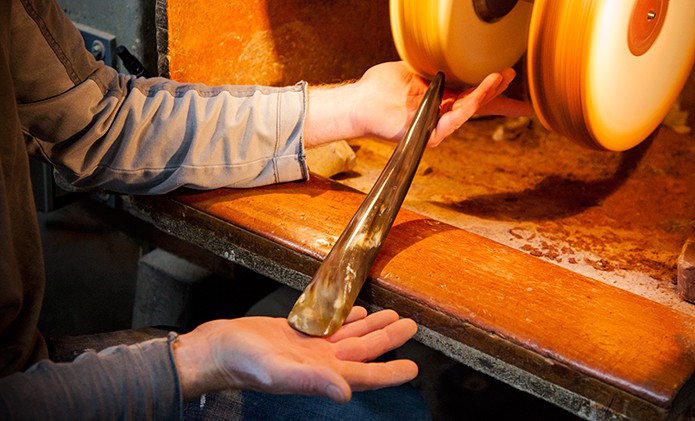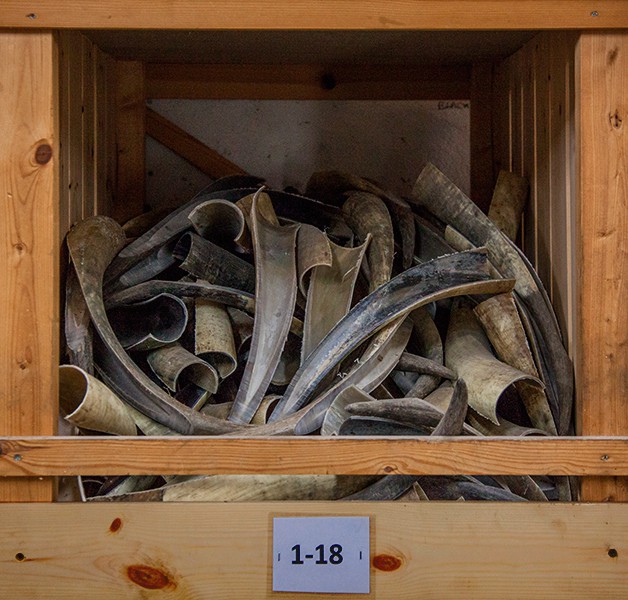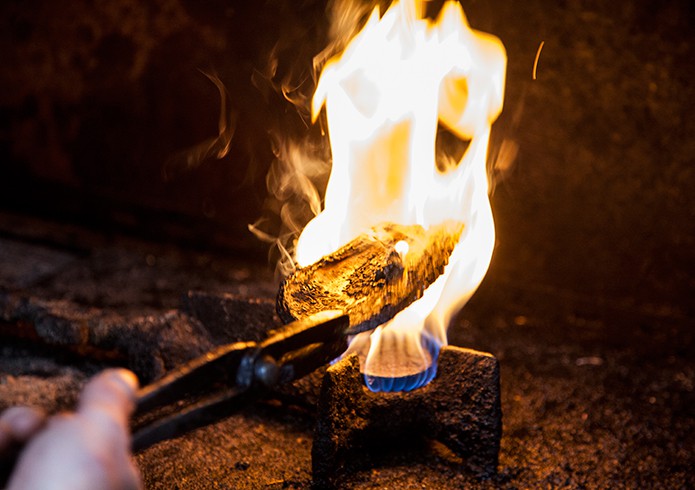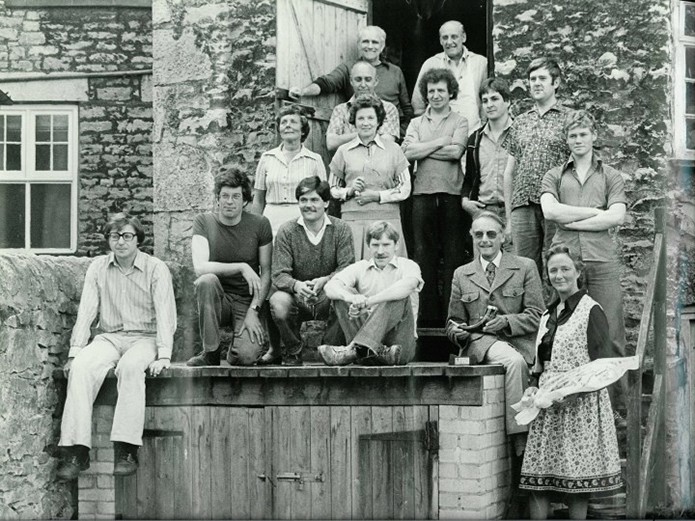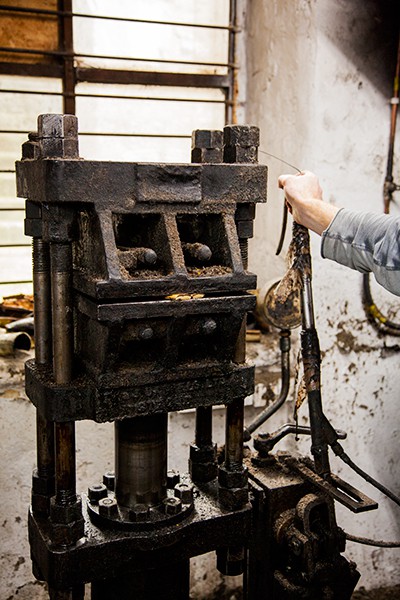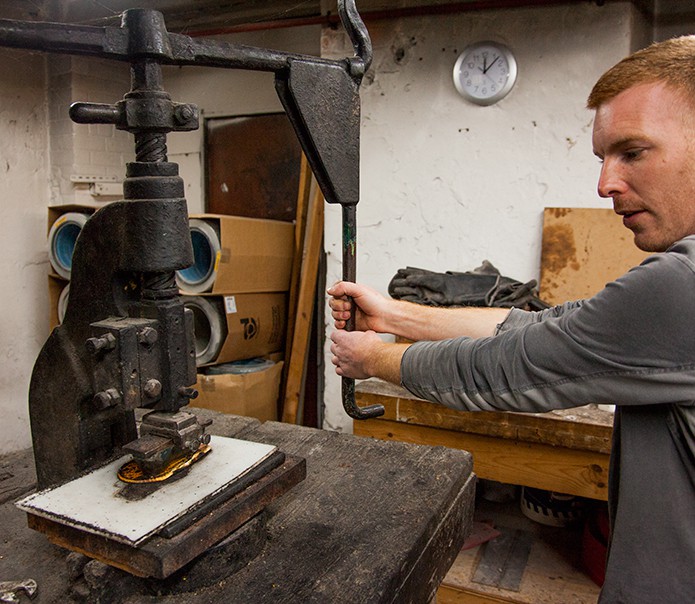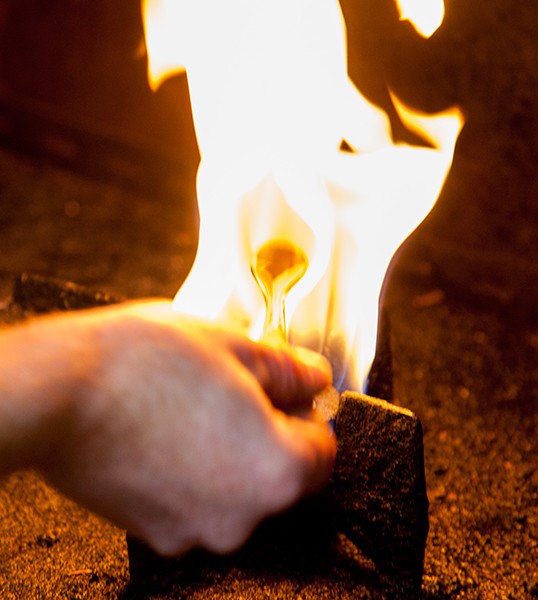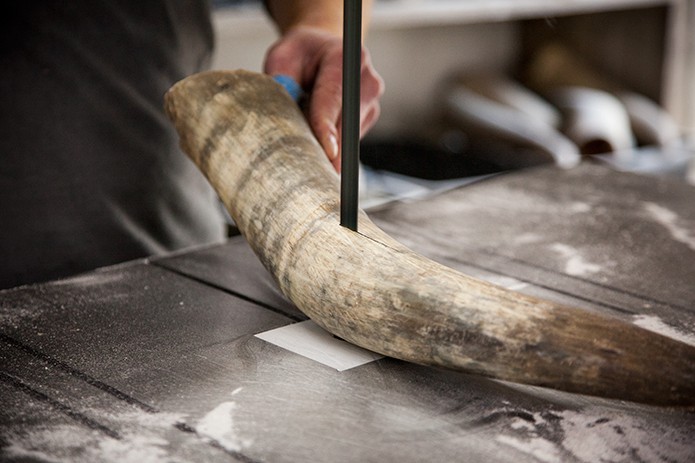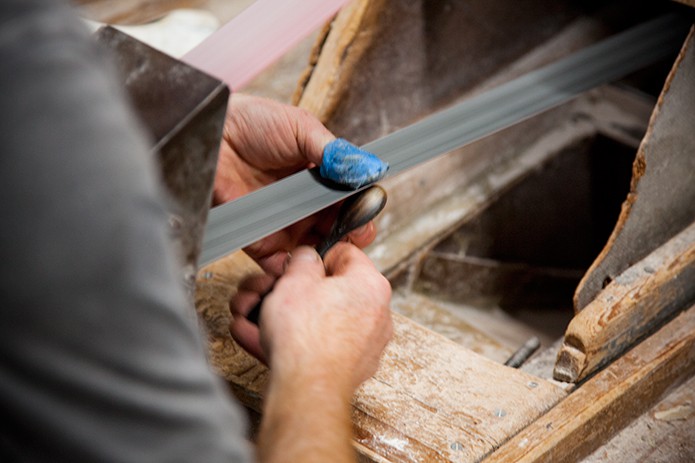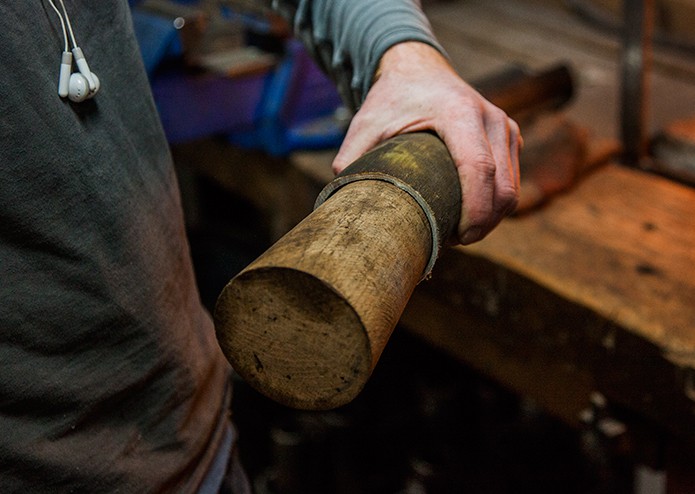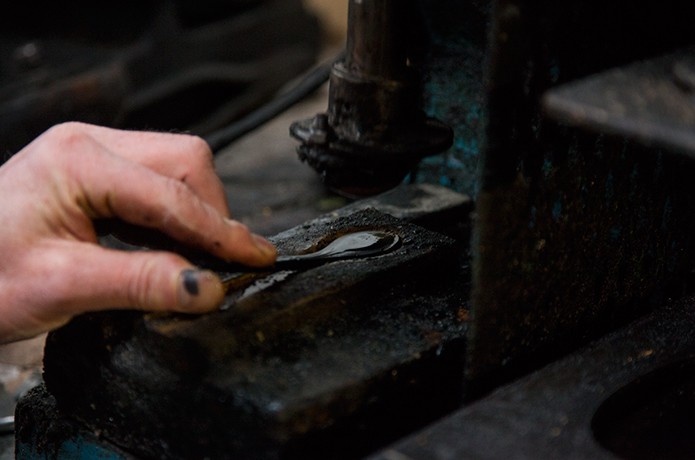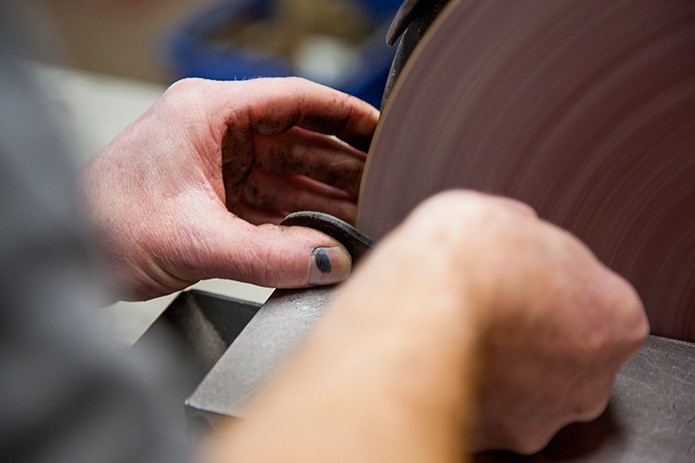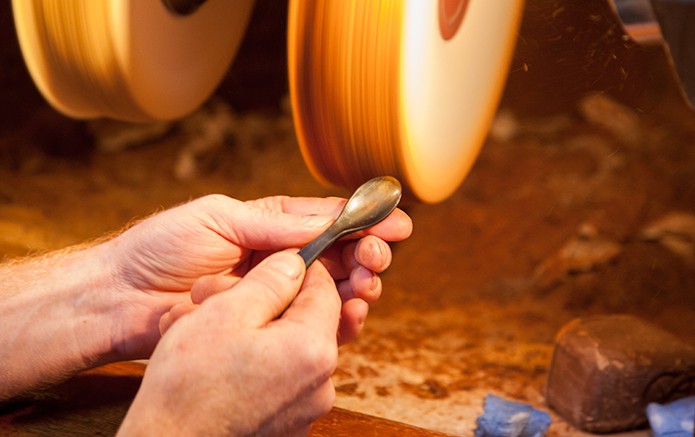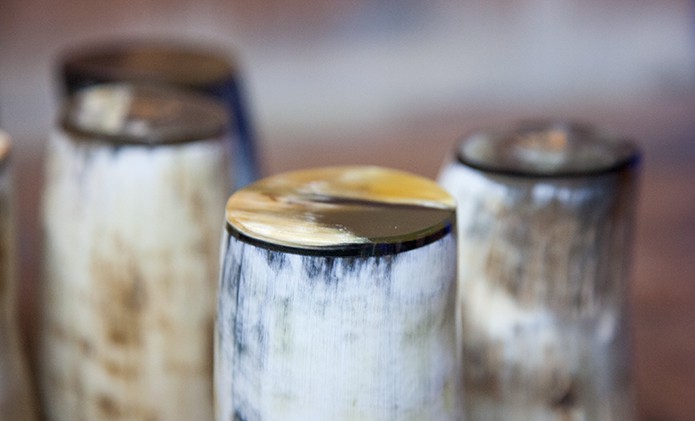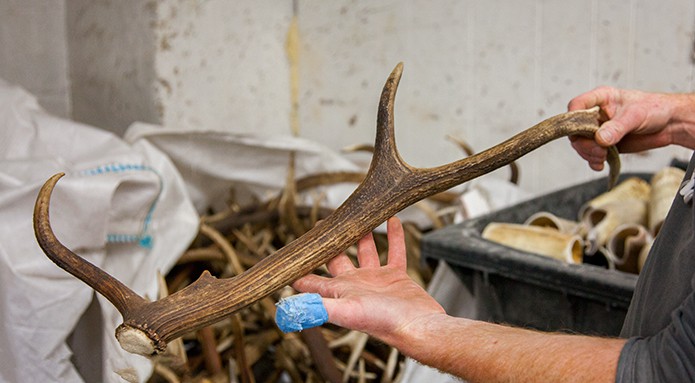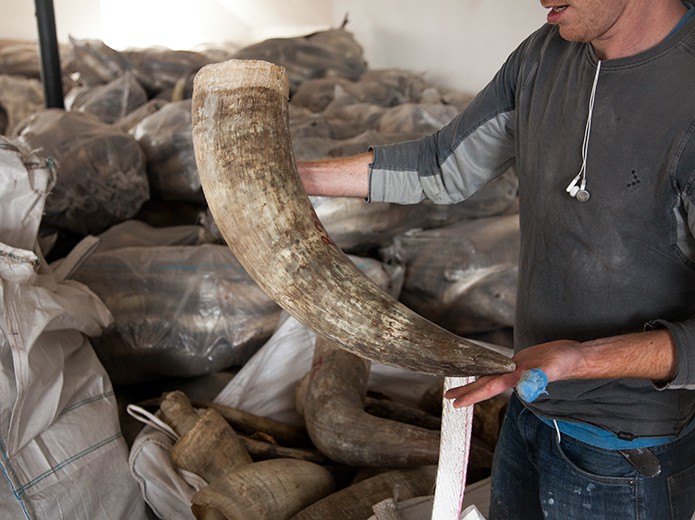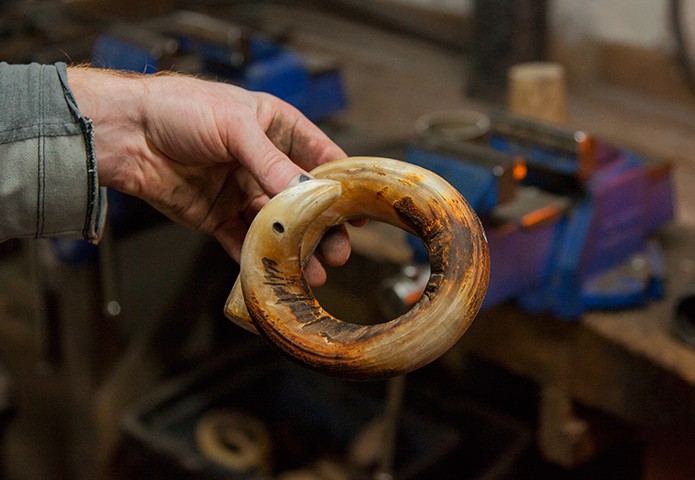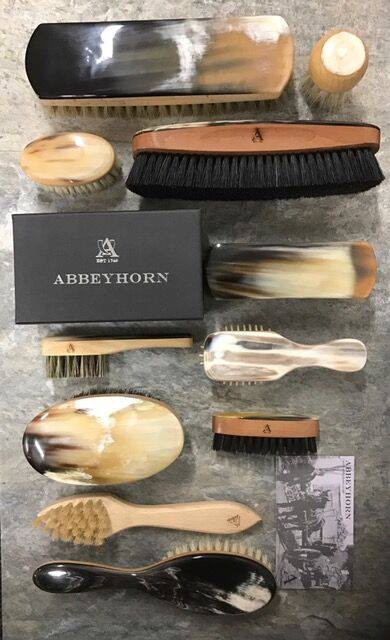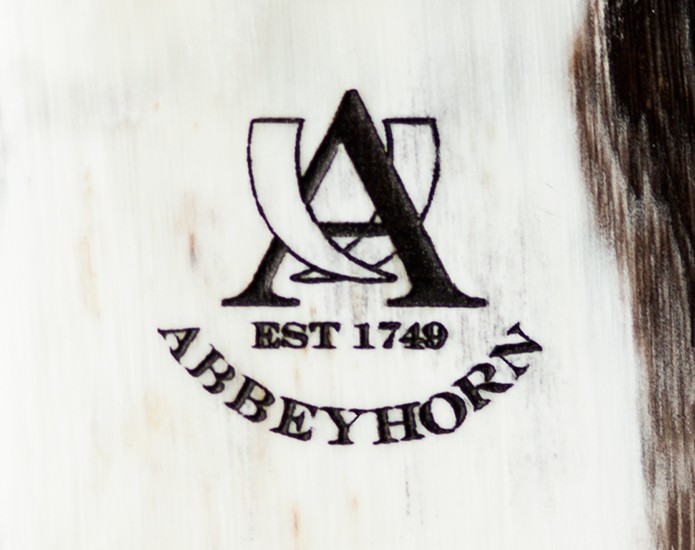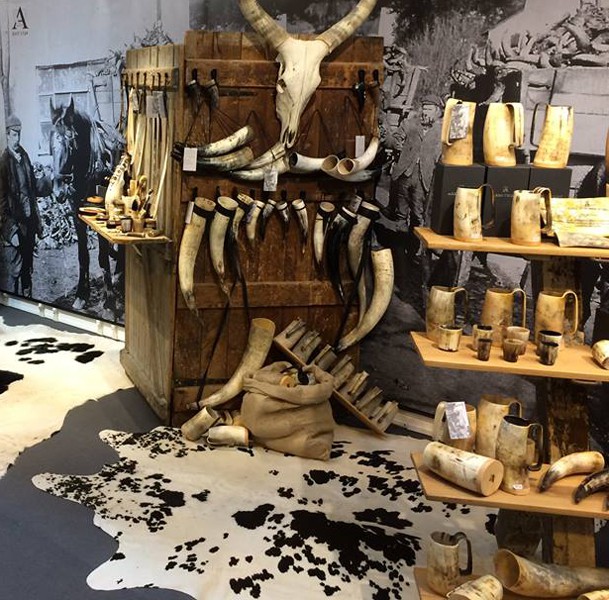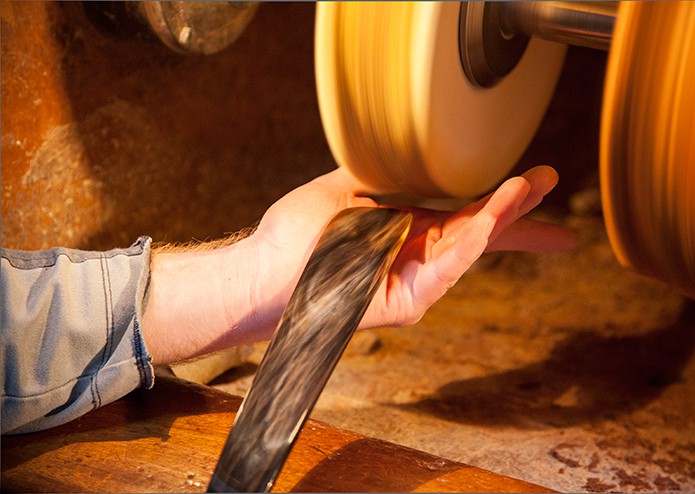
Working with horn, one of the earliest raw materials crafted by man, is almost as old as Lakeland’s high hills, which are incidentally home to Abbeyhorn, the last remaining horn works in the UK. Using traditional techniques carried through from the mid-18th Century, Abbeyhorn’s horn workers transform the tough yet beautiful material from its raw wild state into something practical and pleasing aesthetically, whilst retaining the raw, wild, tough beauty of the horn, mirroring the factory’s location on the edge of the Lake District with its high horn pyramidal peaks and raw, wild, tough beauty also.
An ancient and yet practical material, one could almost call it ‘pre-historic plastic’, horn is a hugely versatile and easily moulded malleable material that has been worked over the millennia from the first human beings through to the present day, where, in a world where convenience, planned obsolescence and throw-away culture is all too often the accepted norm, beautiful objects skilfully fashioned by dedicated craftsmen out of such a sacred material, which is ethically sourced, allows an appreciation of the rare fusion of nature and craftsmanship. Abbeyhorn pieces are popular worldwide and have seen a huge upturn in demand fuelled by the popularity of their pieces in cult TV shows such as Game of Thrones and Vikings.
Here we talk to Paul Cleasby, owner of Abbeyhorn, to discover in more detail how one of the first ever and most rudimentary of raw materials – discarded horn – is transformed via heat and manipulation (as opposed to the common misconception that it is carved) using age-old techniques into a range of both traditional and modern objects that are hugely popular today all over the world…
Firstly, for those readers who aren’t familiar with Abbeyhorn, please can you explain what you do?
Abbeyhorn is the last remaining horn works in the UK, where, in our little factory on the cusp of the Lake District, our Horn Carvers hand craft a beautiful array of gifts from Ankole Cow Horn, Scottish Red Deer Antler, and Welsh Rams Horn, using traditional techniques passed down through the generations, since 1749.
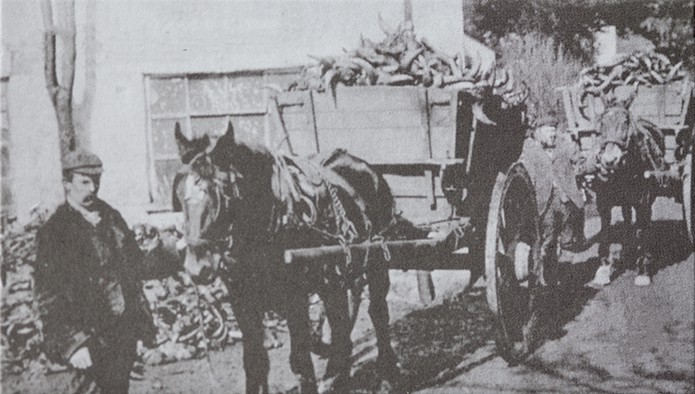
Horn being transported to Abbeyhorn workshop by horse and cart in the 19th Century. Image courtesy of The Worshipful Company of Horners
Are you able to define the uniqueness of your products and why they are so well-received by customers all around the world?
There are several reasons why we think customers like Abbeyhorn products. Firstly, they are made from a natural material recycled from ethical sources, which would be put into landfill if we did not use it. Secondly, since no two pieces of horn are ever the same colouration, each piece we produce is unique and individual. Thirdly, our large product range with traditional and modern designs appeals to a wide range of people. Fourthly, our products are made here in the UK on the cusp of the Lake District. Lastly, if you add the handmade element using traditional methods handed down over generations, we feel all these help us to stand out in an artificial world.
Are there differences in the properties of antler and horn i.e. do they behave differently, and are certain materials preferred over others for making different products?
There are certainly differences; visually, the range of colours is more varied in cow horn – from creamy white, honey-coloured, brown through to black – with noticeable coloured flecks and markings, whereas with buffalo horn, colouring is nearly always black or dark brown with far fewer variations, so colour alone can determine suitability for certain product types. Rams horn, once finished, has an almost glass-like appearance, and is popular for finishing walking sticks. Selecting the colour of horn is a very important part of the buying decision for individuals.
Physically, cow horn is also easier to manipulate than buffalo horn, which has a denser structure of fibres, which is why cow horn is my favoured material to work with, allowing almost endless possibilities for product design. Even then, there are significant variations in the size and types of cow horns we receive – for example, the thinner/lighter horns are more suitable for drinking horns and bugles, whereas the thicker horns are more appropriate for making shoe horns. The horns are sized and sorted in our warehouse on arrival and graded for particular uses depending on thickness and length. The longest horns, i.e. those longer than 24 inches, tend to be reserved for making very long shoehorns for tailors. Some horns are sorted for matching pairs for chair legs and chair backs.
Antler, on the other hand, has a ridged, outer surface, compared to the smooth finish of horn, which, together with its cylindrical form, makes it ideally suited to handles, usually brown in colour, but can also be light brown or even creamy white.
Horn may be regarded as being the earliest forerunner of plastics, having a long history of being shaped by heat and pressure. Indeed, many plastic products today have even been made to resemble the look of horn, especially buttons, combs and bowls. How is it possible to distinguish a genuine horn item from faux horn products?
Indeed, the word “plastic” actually derives from the Latin word plasticus, which means ‘to be able to be moulded’, and horn is commonly acknowledged as the first natural plastic. It is a shame that nowadays instead of using genuine horn the world replicates it in plastic, because horn is certainly more durable and more beautiful.
A little trick to see if it an item is made from horn would be to heat a metal pin or needle and then try and push it through the item – it will not go through horn, whereas it would easily melt through plastic. Also, if you burn horn, there would be also be a very different smell – horn would char and smell like burnt hair, whereas plastic would melt and deform, giving off acrid fumes.
Can you tell us the background to your ownership of Abbeyhorn, and how you became involved in such an ancient craft?
I began working for Abbeyhorn of Kendal (as it was known then) back in 1980 following an advert in our local newspaper for an apprentice horn worker. I came from a farming family, so already has some understanding of the industry, but I was keen to learn much more about all aspects of the craft. I’ve always had an entrepreneurial mindset, and when the opportunity arose for me to buy the company from the previous owner in 1991, I jumped at the opportunity. With the previous owner retiring, I’m sure that the craft would have been lost, as there was no one else in his family looking to continue the business. Upon buying the company, I changed the name to Abbeyhorn of Lakeland, and then to simply “Abbeyhorn”, following the purchase of a Scottish horn works called Horncraft in 1998.
How does 21st Century horncraft differ from 18th Century horncraft when Abbeyhorn first began trading and have your methods and techniques changed a great deal over centuries?
Our working techniques have changed very little over the centuries. Whilst we have introduced new electric powered machinery over recent decades to reduce production times to replace the treadle-powered spring pole, for example, we are committed to the same skilled methods and techniques in the making of our products as was the case centuries ago, and it is that which defines Abbeyhorn – ‘handmade, using traditional techniques’.
Whilst we have upgraded most of our machinery compared to previous centuries, there will still be one familiar piece, this is the fly press, which has many uses, for example, we use to flatten horn for the bases of drinking vessels, backs of brushes and to make plates to cut spoons from, to name a few.
Looking across the workshop, what you say are the essential tools of your craft today?
There are a number of essential tools; in no particular order, they are:
An open orangey flame. We use this for the moulding stage, such as moulding handles and shoehorns. The heat alters the fibres of the horn allowing them to become temporarily pliable and soft, ready for moulding. Too much flame, however, can burn the horn before it has had a chance to soften, so an even heat is required, so the horn has to be kept moving. If the horn isn’t heated long enough, it has a memory, which will result in it changing back to its original shape. As an alternative to a direct flame, we can also heat the horn in oil, which we use for smaller items, such as spoons, bases of pen cups, plates, etc. Heating horn with oil has the effect of keeping the shape longer, which is down to the way the molecules are broken down. For some items we use a combination of both oil and flame.
The bandsaw is used for “sawing up”, when we take the initial horn, and cut into pieces depending on its use. It is also used for trimming excess horn following the heating and moulding stages.
The taping machine is used in the “taping” stage, which occurs before polishing to smooth the surface and remove imperfections. We have two separate machines set up with different grades of abrasive sandpaper. Given the abrasiveness of the sandpaper, we use heat resistant tape pad on fingers to protect them.
The moulds we use are vital for manipulating the pliable horn, once heated, into the shapes we want – either flat, curved or round using wooden inserts.
The moulding press which we use for moulding the bowls of spoons, is very old, and uses brass casting within the mould.
The circular sander is used in the “disking” stage. This tool is used to rough form the piece, but great care needs to be taken, as its possible to ruin a piece in seconds – the circular sander works at very high speed, and a momentary lapse in concentration can see deep grooves gouged in the horn very quickly.
We use a power buffer to polish the horn to produce the high-gloss finish. The cloth buffing wheel has polishing compounds added to them – such as rouge and lustre compound – to bring out the colour of the horn and produce an extremely slick finish. All the machines we use are connected to dust collectors to prevent dust from being circulated around the workshop.
With the horn, bone and antlers that come from your suppliers being a natural raw material, what kind of consistency can you expect, and is there a lot of wastage?
Because the horn is a natural material grown on an animal for many years, they come in all sorts of shapes, sizes and colours, with each horn being unique with amazing striations. There can however be faults, some of these add to the charm, but some mean that part of the horn cannot be used. So, there is some wastage, but we try to use as much as we can, and we are developing new products along the way to cut down on the wastage. We have just introduced a 5” polished and a 5” raw drinking horn to reduce wastage of the tips of the horn when we make other products.
Stag Antler again varies greatly in size and number of points or tynes depending on factors such as age, weather, quality of feeding, etc, but we don’t waste a lot of stag as we have several customers who buy stag antler bits.
There is an increasing awareness of responsibly-sourced materials, environmental sustainability along with animal welfare; are you able to tell us where you source your raw materials?
None of the horn we use is from endangered species, and is all responsibly-sourced. Due to the fact that our domestic cattle in the UK are selectively bred and no longer grow horns, we source our horns from Ankole Cattle from Nigeria. I should emphasise that all horns are sourced as a by-product of the meat industry, and are not bred for their horns. The Ankole Cattle in Nigeria have a lot of space to roam, and their horns are left to grow without fear of damaging one another, which results in some very large, distinctive horns, some in excess of 30 inches! If we didn’t make use of the horns, they would only end up in landfill.
Our Antler is sourced ethically from Scottish Red Deer living in the Highlands. Red Deer are one of the largest deer species, and the stags shed or cast their antlers naturally once a year, which are then gathered up for us to use.
The Rams horn we use is sourced from Wales, and, again, is a by-product of the meat industry.
Objects made from horn tend to be traditional, such as shoehorns and combs, and while there is still a call for these traditional pieces, are there any horn versions of more modern objects that you produce?
The traditional products like shoehorns and combs are still very popular, but thanks to the cult series Game Of Thrones, our Soldiers Horn Mead Mugs have become extremely popular, but with 17 steps to make each mug, we can’t produce them fast enough. The growing male grooming market has enabled us to offer a fantastic range of modern and traditional products with a horn twist, like our fantastic moustache brushes and combs, cuff links and shaving brushes.
With this eclectic mix of classic and contemporary objects, is it possible to describe a typical Abbeyhorn customer, if indeed, there is one?
We don’t think there is a typical Abbeyhorn customer, because our large range of products spans across so many different markets, and appeals to people from all walks of life. From the re-enactment, Viking world, to the high-end retailers of London and all over the world, to the local County show, and even on the television.
Finally, Abbeyhorn has been rescued and revitalised by your passion and commitment, what do you see for the future of Abbeyhorn, can you give us any clues to the next series of collaborations and resultant collections and pieces?
Abbeyhorn is currently working on expanding the brand of the company worldwide, and we have recently invested in new artwork and boxes to complement our product range. We engrave the majority of our products with the Abbeyhorn logo, to help spread the Abbeyhorn name. We have also ventured into the world of social media and promoting our website around the world.
We continually look at ways to improve and develop our products, and are always happy to listen to customer’s feedback and ideas. We have expanded the drinking vessels range, including the creation of the Horn Shot Glass, and have recently produced bespoke earrings for the designer J W Anderson.
Our vision for the future would be for horn to be introduced as a material in to the school curriculum alongside wood, metal and plastic in the technology departments. This would enable us to run training courses for groups of children and adults to learn the art of horn craft, to keep this tradition alive.
Thanks to Paul Cleasby for taking time out of his busy schedule to answer our questions. All images © Merchant & Makers unless otherwise stated. For our interview with Chris Mason, Factory Manager at Abbeyhorn, revealing the skill involved in making a shoehorn, click here. Further details on Abbeyhorn below:



